21 October 2024 : Daily Current Affairs
1. India’s Solar Ambitions Face Hurdles Amid Heavy Reliance on Chinese Imports and Domestic Manufacturing Challenges
(Source: Indian Express; Section: Economy; Page: 13)
| Topic: GS3 – Indian Economy |
| Context: |
|
Analysis of News:
Dependence on Chinese Imports
- India’s solar manufacturing is still in its early stages, heavily dependent on imports, particularly from China, which dominates global solar manufacturing.
- In 2023-24, India imported $7 billion worth of solar equipment, with China accounting for 62.6% of this total.
- China controls 97% of the world’s polysilicon production and 80% of solar modules, creating a significant challenge for India in developing a self-sufficient solar manufacturing ecosystem.
Domestic Manufacturing and Challenges
- India has implemented policies like the Production Linked Incentive (PLI) scheme to boost domestic manufacturing, but progress has been limited.
- Currently, 90% of India’s solar manufacturing involves assembling imported modules, with only 15% local value addition.
- India lacks domestic production of key components like polysilicon, solar cells, and aluminum frames.
Need for Self-Reliance in Solar Manufacturing
- To reduce its dependence on imports, India needs to invest in upstream solar production, starting with silica refining and polysilicon production.
- Developing domestic capacity for essential materials like aluminum frames and glass will also require government support and research and development efforts.
Global Context and Recommendations
- China remains the global leader in solar equipment manufacturing, exporting $39.5 billion worth of solar modules in 2023.
- To compete, GTRI recommends that India expand the PLI scheme, invest in skilled labor, and collaborate with countries like the US, EU, and Japan to establish large-scale manufacturing facilities.
- Reducing dependency on China is critical for India to meet its renewable energy goals while ensuring sustainable growth in the solar sector.
| What Steps can India Take to Enhance the Viability and Efficiency of Solar Energy? |
|
Streamlined Land Acquisition and Innovative Land Use Policies: Implement a centralized land bank system for solar projects, identifying and pre-clearing suitable non-agricultural lands. Grid Modernization and Smart Integration Technologies: Invest heavily in smart grid technologies and energy management systems to handle the variability of solar power. Innovative Financing Mechanisms and Risk Mitigation Tools: Establish a dedicated Green Bank for renewable energy projects, offering low-interest loans and credit enhancement tools. Domestic Manufacturing through Technology Transfer and R&D: Implement a phased manufacturing program for the entire solar value chain, from polysilicon to modules. Comprehensive Energy Storage Policy and Infrastructure: Develop a national energy storage mission with clear targets and incentives for various storage technologies. Skill Development and Workforce Training Programs: Establish a network of solar skill development centers across the country, focusing on rural areas where large solar projects are typically located. Water-Efficient Cleaning Technologies and Practices: Mandate the use of robotic dry-cleaning systems for large-scale solar installations in water-stressed areas. Accelerating Rooftop Solar Adoption: Revamp the rooftop solar ecosystem by implementing a unified, nationwide net metering policy with consistent regulations across states. |
| PYQ: India has immense potential of solar energy though there are regional variations in its development. Elaborate. (250 words/15m) (UPSC CSE (M) GS-1 2020) |
| Practice Question: Assess the challenges and opportunities which India is facing in achieving its goal of installing 500 GW of renewable energy capacity by 2030, particularly in the solar sector. Discuss the implications of heavy reliance on imports and the need for self-reliance in solar manufacturing. (250 words/15 m) |
2. Rising Reliance on Agriculture in Rural India Amid Economic Growth: A Post-Pandemic Paradox
(Source: Indian Express; Section: Explained; Page: 14)
| Topic: GS3 – Agriculture |
| Context: |
| The article analyzes the growing dependence on agriculture for livelihoods in rural India, despite the country’s overall economic growth and diversification challenges. |
Analysis of News:
Rising Dependence on Farming in Rural India
- The recent NABARD All India Rural Financial Inclusion Survey (2021-22) reveals a growing reliance on farming for livelihoods. The proportion of rural households engaged in agriculture has increased from 48% in 2016-17 to 57% in 2021-22.
- This growth indicates a reversal of the trend where rural India was increasingly moving away from agriculture.
- Additionally, agricultural households now earn more monthly on average compared to non-agricultural households, signaling the rising income contribution from farming activities.
Shift in Income Sources for Agricultural Households
- Agricultural households have seen a higher share of their income come from farming-related activities like cultivation and animal husbandry.
- This increase is evident across various landholding sizes. The contribution of non-farming income sources has correspondingly decreased.
- This growing financial dependence on agriculture contradicts expectations of rural economies diversifying into other sectors.
Impact of COVID-19
- The pandemic played a crucial role in this shift. While most sectors faced significant disruptions, agriculture was exempted from lockdown restrictions.
- The farm sector remained stable, benefiting from consecutive good monsoons, and this resilience likely inflated agriculture’s share in rural livelihoods.
- Despite the recovery of the broader economy post-pandemic, agriculture’s role remains heightened.
The Paradox of India’s Economic Growth
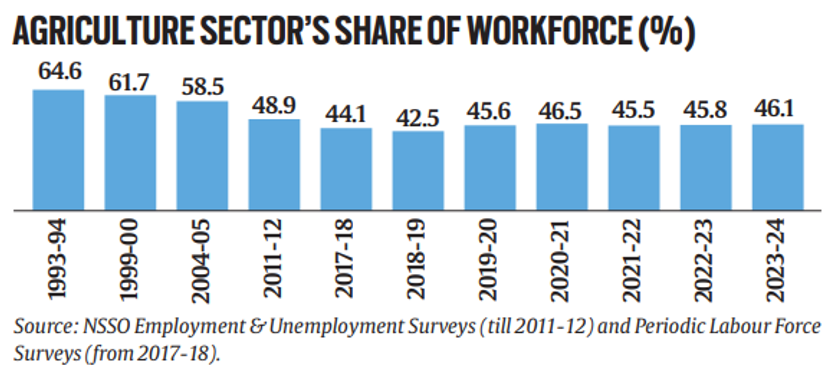
- Despite India’s growing economy, the share of the rural workforce in agriculture remains elevated.
- Data from the Periodic Labour Force Surveys (PLFS) indicates a reversal in the decline of agriculture’s share in employment since 2018-19.
- The persistence of this trend, even amid GDP growth, raises questions about the lack of job creation in industries like manufacturing.
- Instead of transitioning to factory-based employment, surplus labor from agriculture has moved to sectors with similarly low productivity and wages, such as trade and construction.
Regional Variations
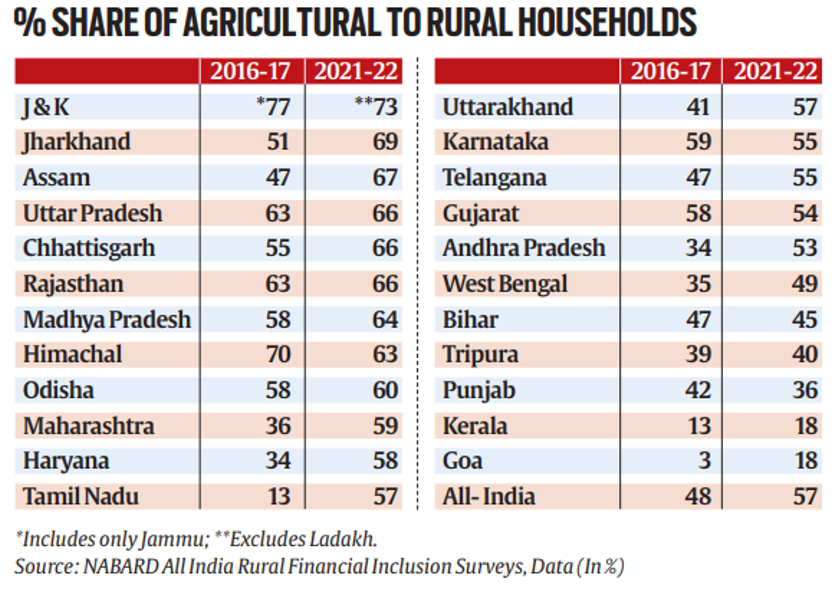
- The reliance on agriculture varies across states, with states like Chhattisgarh, Madhya Pradesh, and Uttar Pradesh having high agricultural employment, while states like Goa, Kerala, and Punjab report much lower shares.
- This disparity highlights regional differences in economic structure and opportunities beyond farming.
Conclusion
- India’s increasing dependence on agriculture for livelihoods, even as the economy expands, highlights a complex dynamic.
- The pandemic-induced shifts and limited job creation in other sectors may explain this paradox, underscoring the need for further policy focus on industrial growth and employment diversification.
| Practice Question: Examine the reasons behind the increasing dependence on agriculture for livelihoods in rural India post-pandemic, despite significant economic growth and diversification efforts. What implications does this trend have for rural development and employment generation? (250 words/15 m) |
3. What do the Atlantic Ocean hurricane forecasts foretell for India?
(Source – The Hindu, International Edition – Page No. – 7)
| Context |
|

Forecasting Challenges for Hurricanes and Cyclones
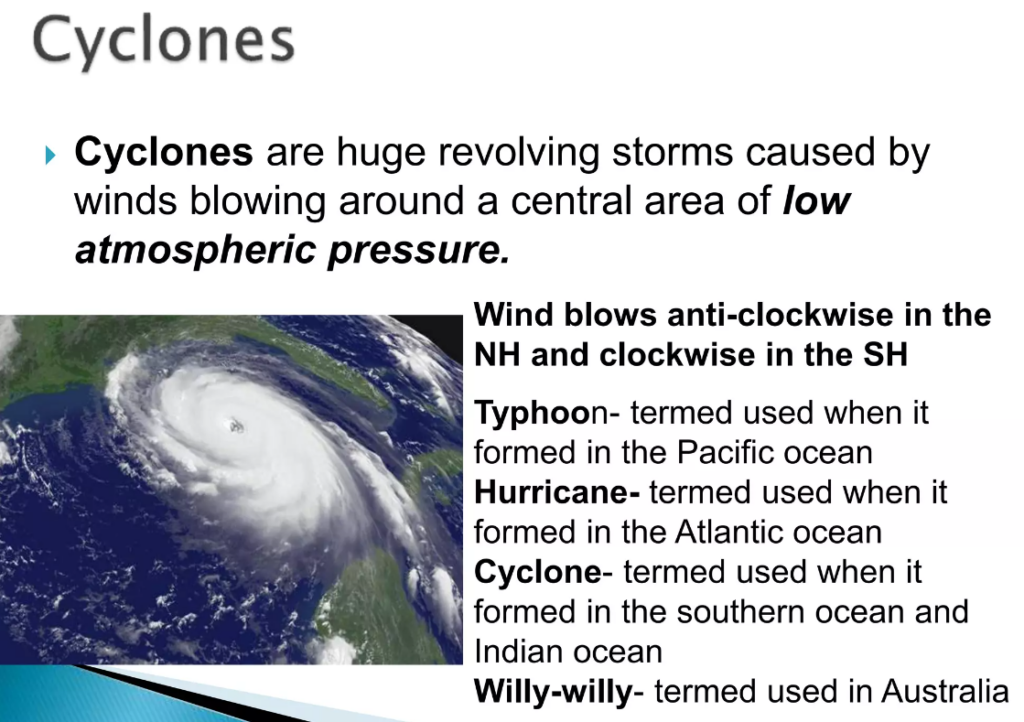
- Meteorologists initially predicted a historic hurricane season for 2024, anticipating a strong La Niña to emerge during winter.
- However, while hurricanes Helene and Milton occurred, the summer of 2024 has not seen major hurricanes, leading to a reassessment of these forecasts.
- The expected strong La Niña has not developed as anticipated, prompting weather agencies to downgrade their forecasts.
- This inconsistency raises questions about whether the recent record warming has altered the traditional relationship between hurricanes and the El Niño/La Niña phenomena.
The Complexity of Hurricane Forecasting
- Seasonal cyclone forecasting remains a complex challenge.
- While overall hurricane forecasts have improved, particularly in predicting the landfall of storms, forecasting their intensity remains difficult.
- A significant gap exists in understanding the impacts of hurricanes after landfall, where post-landfall winds and rain can cause extensive damage and loss of life.
- Warming upper ocean temperatures in cyclone-producing regions have contributed to rapid intensification of storms, a phenomenon that remains challenging to predict accurately.
- The North Indian Ocean is experiencing an increase in cyclone activity, particularly in the Arabian Sea.
Chronic and Acute Climate Stressors
- Despite progress, the Indian subcontinent remains vulnerable to both chronic and acute climate stressors.
- Chronic stressors include rising sea levels and extreme weather patterns, while acute stressors, such as heavy rainfall and cyclones, exacerbate the effects of chronic issues. For instance, cyclones are likely to cause greater flooding as sea levels rise.
- Recent heavy rains and flooding in Tamil Nadu highlight the impact of warming oceans on monsoon patterns, causing extreme rainfall.
- Additionally, forecasting challenges were evident when a predicted low-pressure system missed its target area.
Future Directions for Forecasting and Resilience
- India, as a developing economy, must enhance its financial and resource management capabilities to cope with these challenges.
- Implementing hyperlocal risk mapping will be crucial, given the financial limitations in covering all regions for cyclone risks.
- India is incorporating mitigation and adaptation strategies into fiscal policies by investing in renewable energy, electric vehicles, and disaster management systems.
- However, the broader economic development of India hinges on the resilience of the entire subcontinent.
Conclusion
- The vulnerabilities posed by climate stressors represent not only socio-economic challenges but also national security concerns.
- India’s strategies for fostering cooperation and stability in the region must now encompass climate risk considerations.
- Establishing a comprehensive weather and climate network across the subcontinent is essential to improve forecasts and projections for all neighbouring countries, paving the way for enhanced regional resilience and collaboration.

| PYQ: Discuss the meaning of colour-coded weather warnings for cyclone prone areas given by India Meteorological Department. (150 words/10m) (UPSC CSE (M) GS-1 2022) |
| Practice Question: Discuss the challenges faced in forecasting hurricanes and cyclones in the Indian context, particularly in light of climate change. How can India enhance its disaster management strategies to mitigate the impacts of these extreme weather events? (150 Words /10 marks) |
4. On climate finance to developing nations
(Source – The Hindu, International Edition – Page No. – 10)
| Topic: GS2 – International Relations ,GS3 – Environment |
| Context |
|
Overview of COP29
- The 29th Conference of the Parties (COP29) of the UNFCCC is set to take place in Baku, Azerbaijan, from November 11 to 22, focusing on climate finance as a central theme.
Vulnerability of Developing Countries
- Economically developing nations are particularly vulnerable to climate change due to geographical factors and reliance on sensitive sectors like agriculture.
- Despite their vulnerability, these countries contribute minimally to global emissions, with developed nations accounting for 57% of cumulative emissions since 1850, as per the Sixth Assessment Report of the Intergovernmental Panel on Climate Change.
- Developing countries struggle with competing developmental needs, hindering their ability to independently take climate action.
- The 2009 Copenhagen Accord committed developed countries to provide $100 billion annually in climate finance to developing nations by 2020.
Understanding Climate Finance
- The UNFCCC defines climate finance as funding from local, national, or transnational sources aimed at supporting climate mitigation and adaptation efforts.
- The OECD reports on climate finance flows from developed to developing countries, with 69.4% of international public climate finance in 2022 being loans and 28% grants.
- Critics argue that these reports should reflect actual disbursals rather than mere commitments and emphasize the need for new, additional funds.

Need for Climate Finance
- Developing countries require external financing for climate initiatives, as 675 million people lacked electricity access in 2021, according to the IEA.
- High capital costs for renewable energy technologies, which are often double in developing economies, necessitate external financial support to balance development and climate action.
India’s Climate Financing Needs
- India aims for 500 GW of non-fossil fuel generating capacity and significant investments in green hydrogen and electric vehicles by 2030, requiring ₹16.8 lakh crore and ₹8 lakh crore, respectively.
- Long-term projections estimate a need for ₹850 lakh crore between 2020 and 2070 to achieve net-zero emissions.
New Collective Quantified Goal (NCQG)
- Establishing a new annual climate finance mobilisation target, the NCQG, is crucial.
- It should encompass actual disbursals, new and additional funds, public capital as direct grants, and private capital mobilised by public investment.
- An expert group has projected that developing countries (excluding China) will need approximately $1 trillion in external finance by 2030.
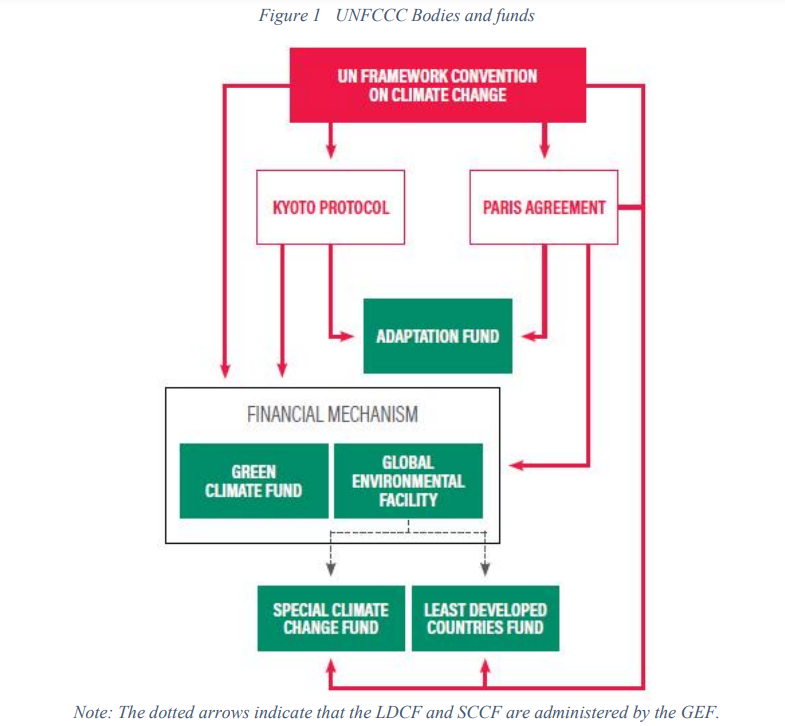
| PYQ: Discuss the consequences of climate change on the food security in tropical countries. (150 words/10m) (UPSC CSE (M) GS-1 2023) |
| Practice Question: Discuss the significance of climate finance for developing countries in the context of the upcoming COP29. What measures should be taken to ensure effective mobilisation of climate finance to support their adaptation and mitigation efforts? (250 Words /15 marks) |
Prelims Facts
1. INDIAN NAVY – ROYAL NAVY OF OMAN MARITIME EXERCISE (NASEEM AL BAHR)
(Source – https://pib.gov.in/PressReleseDetail.aspx?PRID=2066452®=3&lang=1 )
| Context |
|
Naval Exercise Naseem-Al-Bahr:
It reaffirmed India’s commitment to collaboration with nations in the Indian Ocean Region.
Exercise Naseem-Al-Bahr took place from October 13 to 18, 2024, off Goa.
The exercise comprised two phases: a harbour phase (October 13-15) and a sea phase (October 16-18).
Harbour activities included professional exchanges, planning conferences, sports fixtures, and social engagements.
During the sea phase, activities included gun firings, anti-aircraft drills, and Replenishment at Sea Approaches (RASAPS).
The exercise aimed to enhance interoperability, mutual understanding, and cohesion between the two navies.
2. Amylase Evolution: How a Key Enzyme Shaped Human Adaptation to Starch-Rich Diets
(Source: Indian Express; Section: Explained; Page: 14)
| Context: |
| The article explores how the evolution of the amylase enzyme in humans helped adapt to starch-rich diets, with implications for modern health and disease. |
Analysis of News:

Role of Amylase in Human Evolution
- Amylase, an enzyme found in saliva, breaks down starch into simpler sugars.
- This enzyme played a crucial role in human evolution, helping early humans adapt to starch-rich diets, which were made more accessible through the use of fire and later agricultural developments.
Two Evolutionary Waves of Amylase Gene Expansion
- Recent studies published in Science and Nature suggest two major evolutionary waves in which humans acquired more amylase genes.
- The first occurred several hundred thousand years ago, likely linked to the advent of cooking, and the second followed the agricultural revolution around 12,000 years ago, when starch-rich crops like wheat and potatoes were domesticated.
Genetic Variability in Amylase Genes
- Studies have revealed significant variation in the number of amylase genes in human DNA, with some individuals having up to 11 copies, compared to a single gene in chimpanzees.
- This variation may have provided evolutionary advantages, particularly after the development of agriculture, as those with more amylase genes were better able to digest starch-rich diets.
Impact on Modern Health
- The studies suggest that people with fewer amylase genes may be more susceptible to modern diseases like diabetes, as they may struggle to process starch-heavy diets effectively.
- Researchers speculate that understanding amylase variation could lead to new treatments for such conditions.
3. India Recalibrates Trade Strategy: Pauses Smaller FTAs, Focuses on Larger Markets
(Source: Indian Express; Section: Cover Page; Page: 01)
| Context: |
|
Analysis of News:
What is ASEAN?
- The Association of Southeast Asian Nations is a regional organization which was established to promote political and social stability amid rising tensions among the Asia-Pacific’s post-colonial states.
- The motto of ASEAN is “One Vision, One Identity, One Community”.
- 8th August is observed as ASEAN Day.
- ASEAN Secretariat – Indonesia, Jakarta.
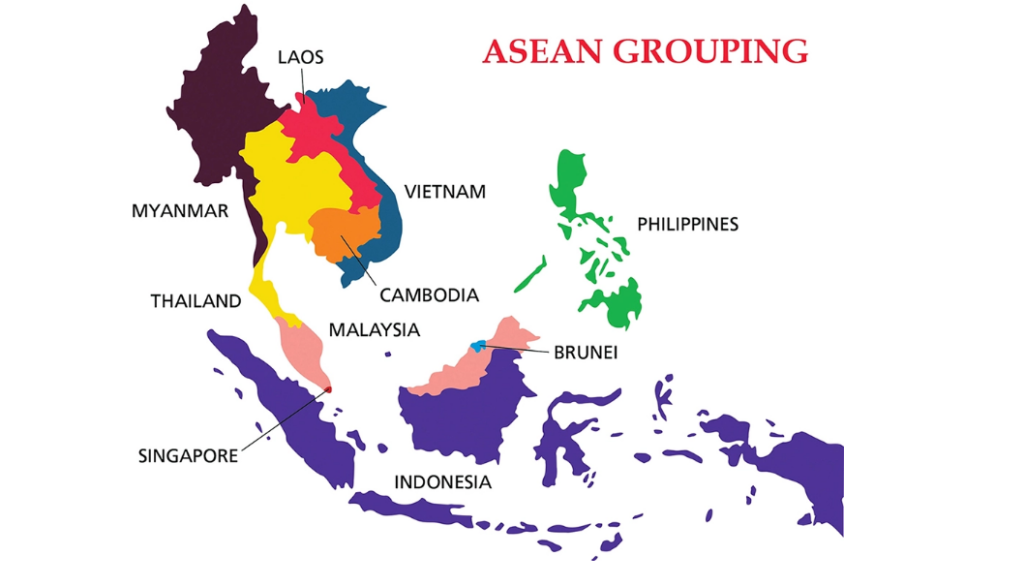
Development of New SOP for Trade Agreements
- The Commerce Ministry is formulating a new Standard Operating Procedure (SOP) to streamline the negotiation process for future trade agreements.
- This includes addressing the lack of consistency and incorporating modern elements like labor and environment, along with clearer understanding of trade-offs and each party’s bottom line.
Concerns Over Trade Imbalance
- Several trade deals, including with Australia and ASEAN, have resulted in higher imports into India, raising concerns about potential breaches in rules of origin.
- For instance, India’s imports from the UAE surged by 52% between April-September 2024, compared to only 11% growth in exports.
Shift in Focus to Larger Markets
- India is now focusing on negotiations with larger and more geopolitically important markets like the European Union and the UK.
- These deals are seen as more promising in terms of maximizing export gains, despite the challenges posed by India’s limited subject matter expertise and loss of institutional memory in trade negotiations.
Review of ASEAN Agreement
- The trade deficit with ASEAN countries has been a major concern, with the deficit increasing by 70% in FY23.
- India is now reviewing its agreement with ASEAN to address tariff asymmetry, while also being wary of a fresh surge in imports after ASEAN joined the China-led RCEP, from which India withdrew in 2019.
4. PM opens 3 airports in Chhattisgarh, Madhya Pradesh, Uttar Pradesh under UDAN scheme
(Source – The Hindu, International Edition – Page No. – 2)
| Context |
|
What Are These Three Airports?
- Surguja, Chhattisgarh: Surguja’s airport will connect the region to Raipur, Jagdalpur, Jabalpur, Kolkata, and Delhi. Developed under the UDAN scheme, it aims to improve connectivity in Chhattisgarh, enhancing regional access to major cities.
- Rewa, Madhya Pradesh: Rewa’s airport, the sixth in Madhya Pradesh. Built by the Airports Authority of India at ₹450 crore, it is expected to boost connectivity in the Vindhya region.
- Saharanpur, Uttar Pradesh: Saharanpur’s airport is located adjacent to an Airforce Station, lacking its own runway. Despite being inaugurated, no flight operation schedule has been announced yet.
| UDAN scheme |
|
5. Gateway at Galathea Bay: the new major port can be a game changer
(Source – The Hindu, International Edition – Page No. – 13)
| Context |
|

India’s 13th Major Port:
- Name and Location: The new major port is the International Container Transshipment Port (ICTP) located at Galathea Bay, Great Nicobar Island.
- Strategic Importance: It is positioned on the East-West international trade route, near major transshipment terminals like Singapore, Klang, and Colombo.
- The ICTP has a natural draught of 20 meters, facilitating larger vessels.
- Economic Impact: It aims to capture transshipment cargo from Indian east coast ports, Bangladesh, and Myanmar, potentially saving Indian ports $200-220 million annually in transshipment charges.
- Development Phases: The port will be developed in four phases, with an estimated total cost of ₹41,000 crore. Phase 1, costing ₹18,000 crore, is expected to be operational by 2028.
6. What does the new ‘lady justice’ statue signify?
(Source – The Hindu, International Edition – Page No. – 10)
| Context |
| The unveiling of the new Lady Justice statue at the Supreme Court symbolises a shift towards Indian tradition and values in the legal system.It aims to promote a more inclusive approach to justice. |
New Lady Justice Statue:
- The new Lady Justice statue, unveiled by the Chief Justice of India, replaces the original statue in the Supreme Court premises.
- The statue is draped in a saree, symbolising Indian tradition, and does not have a blindfold, representing an open and impartial view of justice.
- It holds scales in one hand and the Indian Constitution in the other, signifying the importance of balanced judgments based on constitutional values.
- The blindfold, historically representing impartiality, has been removed to convey that the law acknowledges social diversity and the discrimination faced by underprivileged sections.
- The change reflects an effort towards decoloniality, shedding colonial symbols from the legal system.
- The removal of the sword emphasises the supremacy of the Constitution in Indian jurisprudence, while maintaining the scales to ensure impartiality in judgement.




